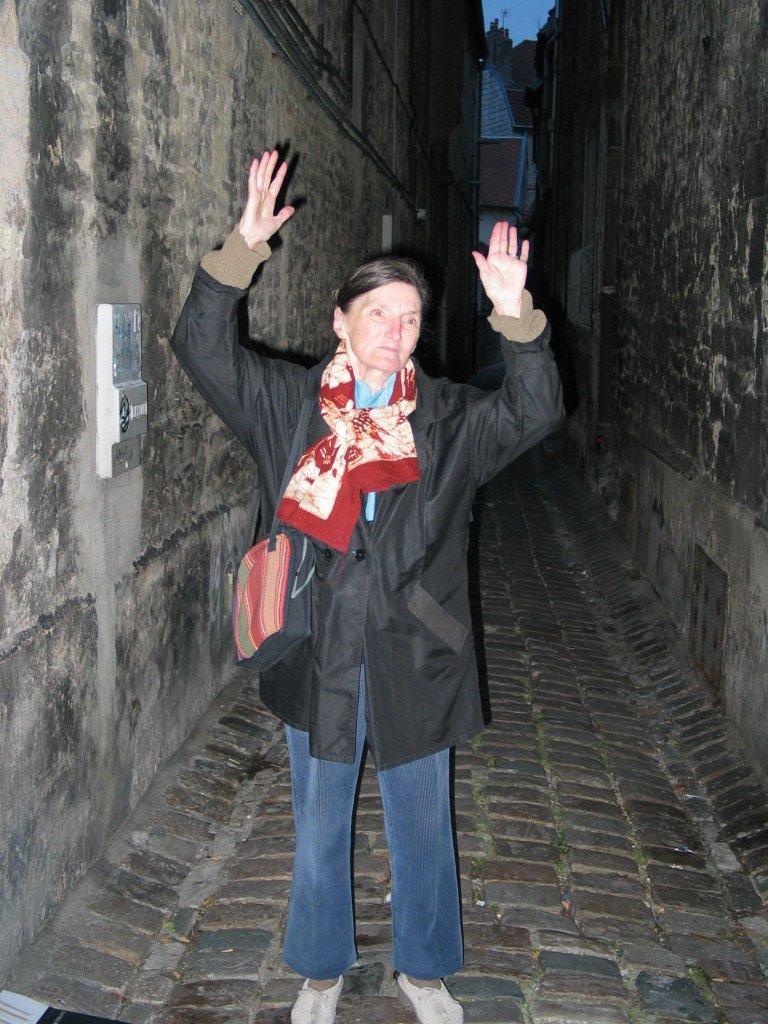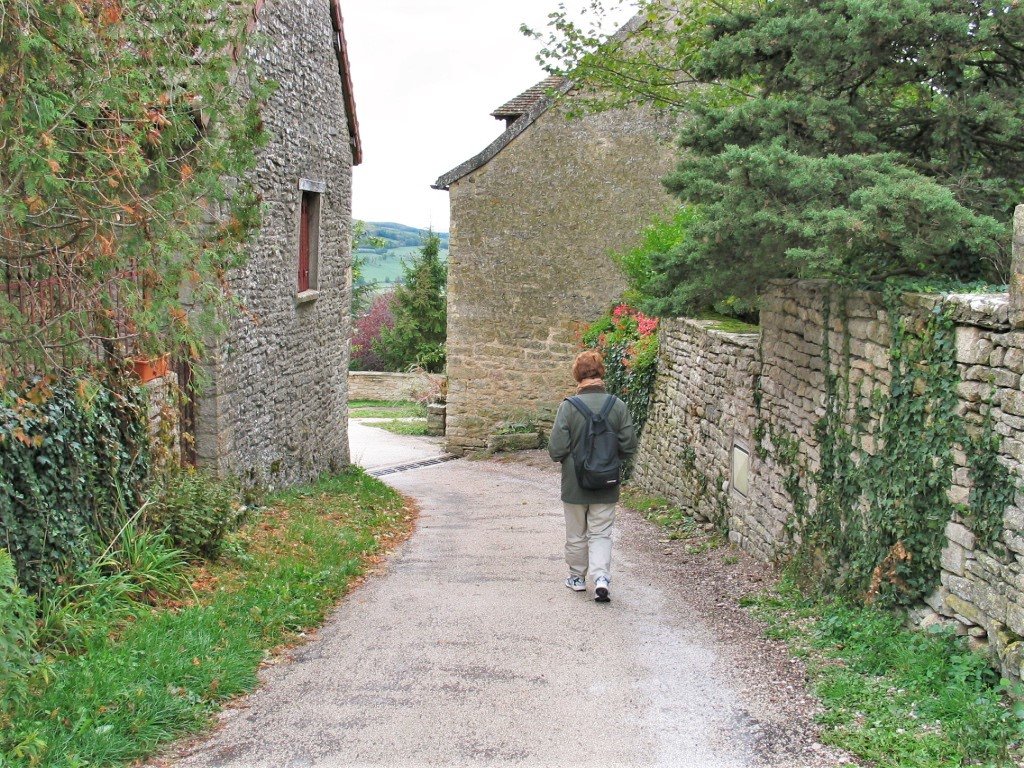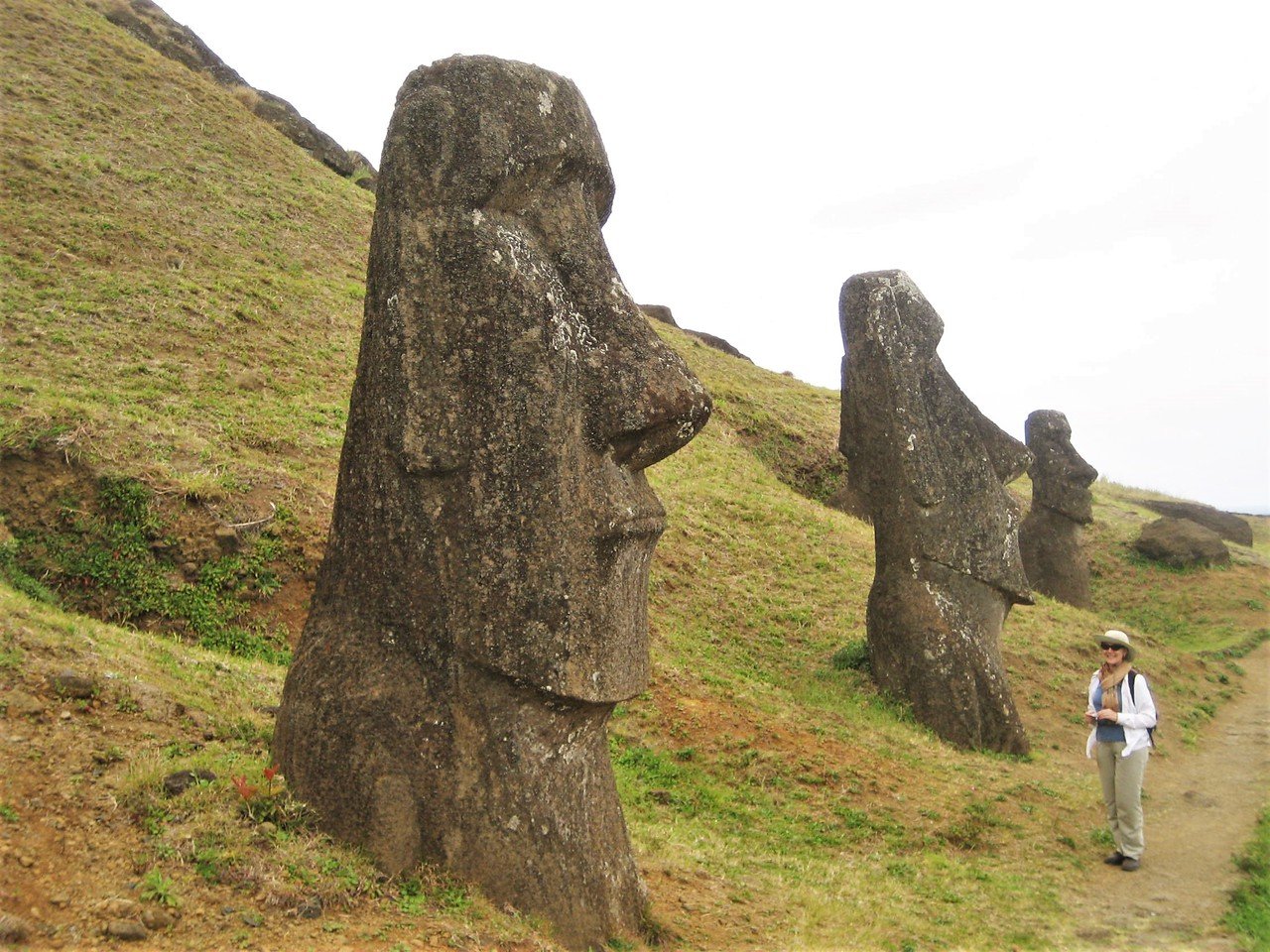Travel Tales
I have been fortunate enough to visit over 70 countries all around the world. My travels have taught me that as much as I loved some of the greatest sights on earth (places like the Pyramids, Angkor Wat, and the Great Wall of China), the best memories are of the people I met.
Here are some of their stories.
The Grass is Always Greener
Our cooking class instructor, Nice, in Chiang Mai, Thailand
Frank and I love to attend local cooking schools when we travel. It’s fun learning how to make local dishes, and we always meet the most interesting people. A cooking class we took when we visited Chiang Mai in northern Thailand was particularly memorable.
Our instructor, “Nice,” taught our lively group of international food lovers (us plus folks from the U.K., the Netherlands, and Spain) the secrets of spicy red curry paste and introduced us to the wonderful tanginess of the Kaffir lime, but she also gave us some insight into the Thai mindset. Just before eating our delicious creations, one of our fellow students asked Nice for the Thai equivalent of “bon appetite.” In a classic case of Western pleasure seeker meets Eastern realist, Nice thought for a moment and said, “We don’t have one. We just eat when we are hungry.”
Later, Nice mentioned she had recently visited Europe for the first time, and of course, we all wanted to hear her impressions. Surprisingly, her most astounding experience occurred at the Englischer Garten in Munich, where German office workers regularly spend their lunch breaks sunbathing in the nude. Nice wasn't shocked by the nudity, but she was totally flabbergasted because “The people wanted to get brown!”
She could not believe Westerners laid out in the sun to soak up the rays, much less used “browning devices” like tanning beds and tanning creams. Watching our puzzled faces, Nice explained that in Thailand, women routinely use whitening creams and do everything they can to protect themselves from the sun in order to be as white as possible. Young girls even aspire to work in offices so they won't have to spend their days out in the sun.
I guess it must be part of the human condition to always want what you don’t have!
Our Lady of the Alley
We had just visited the Resistance and Deportation Museum in Besançon, France, and our minds were reeling from images of Nazi atrocities as we walked back into the city. Up ahead, we noticed an older woman taking lots of pictures of a side alley. Not wanting to miss a photo op, we hurried toward her, curious to see what was so picture-worthy. The woman spoke to us in a combination of French and broken English, allowing us to piece together her story: when she was a little girl, she had escaped the Nazis by running down this very alleyway. (Unfortunately, her father was not so lucky--he was captured and died in a concentration camp.)
The whole conversation was surreal, especially after having just spent several hours delving into the stories of resistance fighters, collaborators, and concentration camp victims in the twenty-room Resistance Museum. I honestly felt as if we had stepped through a time portal into the past. This woman, who had survived ordeals we could only imagine, passionately wished peace for tout la monde (all the world). She kissed my hand and rubbed my husband’s cheek. Then she threw her hands up into the air and declared, “The sky belongs to all of us!”
Typewriters in Romania and Hamburgers in Russia
These two short tales are examples of how travel can reveal things we could never have imagined.
Memorial to the Victims of Communism and of the Resistance
Romania is an idyllic off-the-beaten path destination that made us feel like time travelers, where local transportation might mean a horse-drawn wagon, and farmers can be seen cutting their crops with scythes. But look deeper, and Romania has another darker history.
Our visit to the Memorial to the Victims of Communism and of the Resistance in Sighet included a heart-rending sculpture of those who suffered along with exhibits detailing the daily horrors of living under communism. One story I will never forget involved typewriters.
Typewriters were described as “dangerous weapons” and forbidden for the average person. Owning a typewriter was highly regulated and only permitted if necessary for a person’s occupation. And even then, the owner had to submit a prescribed writing sample every year to be filed with the authorities. The idea was that each typewriter has identifying characteristics, so theoretically, a piece of anti-communist propaganda could be matched to a typewriter sample!
Our guide, Albina, in St. Petersburg, Russia
Seeing Saint Petersburg was a dream come true, and I will never forget the elegance of the Hermitage (and the art treasures housed within) or the stunningly colorful turrets of the Church on Spilled Blood. However, another smaller experience continues to resonate, and it's all about a hamburger.
We had an excellent Russian guide named Albina who shared the story of her country's past, but she was also surprisingly candid about the present. One day, as we were eating lunch, she told us about the people of St. Petersburg who traveled by train all the way to Moscow, a five-hour journey, to eat at Russia’s first McDonald’s. We must have looked confused because she laughed and then said very seriously, “They wanted to see what freedom tastes like.”
Americans in Avallon
We timed our arrival in Avallon, France, to perfectly coincide with a visit to the weekly market where we stocked up on the usual supply of olives, cheese, bread, and jambon (ham). As we strolled through the stalls, an English-speaking Frenchman approached us and asked how we were enjoying our trip to France. Of course, we responded enthusiastically, and then he asked if we were Americans.
Now this was 2003 when relations between the U.S. and France had hit an all-time low, when some American restaurants changed their menus to offer “freedom fries” instead of French fries, and French products were frequently boycotted. Some of our friends had even admonished us for choosing France as our vacation destination. And even though France has always been my favorite country, I have to admit I felt uneasy.
I gulped and confirmed his hunch that we were indeed Americans. He told us his parents had always taught him to be grateful to the Americans for liberating France during WWII. And he went on to say that most of the people in Avallon felt the same way he did.
It was obvious that this stranger had purposely sought us out to share his feelings. He clearly wanted us to know that despite the heated rhetoric of our governments, we were very welcome here in Avallon. All the fears I had harbored about being accepted in France vanished like the croissants on our hotel’s breakfast buffet table. Then, the Frenchman smiled and placed his hand on his chest as he said, “My heart is always with America.”
Museum of History and Culture on Saipan
Saipan Suicide Cliffs
We visited Saipan, located in the western Pacific Ocean, on our around-the-world trip. Not an easy place to fly into, but we came because Frank has a relative who died here during WWII. Seeing the name Charles Supsic carved into a memorial wall was one of the most moving moments of our trip.
We were also touched by our visit to the Museum of History and Culture. Few Americans visit Saipan, so the curator was thrilled to see us and gave us a personal tour of his museum. He told us about the brutal occupation by the Japanese, and their cruel treatment of the people on Saipan who they considered inferior. We also learned about the tragedy of Suicide Cliffs, the site where the Japanese threw themselves and their children into the ocean to their deaths rather than suffer the humiliation of being captured by the Americans.
The saddest story of all concerned the Japanese who visited here after the war. Saipan had always been a vacation spot for the Japanese, similar to our Caribbean, and after the war, it became a popular destination once again. The curator told us that when Japanese visitors come to the museum, they are stunned to learn of the atrocities committed by their military during the WWII occupation of the island. Many of them burst into tears, saying, “We never knew. No one ever told us about this.”
A Bulgarian Fundraiser
Moai on Easter Island
Frank and I had both wanted to visit Easter Island since we were kids, and I still remember the first time I saw photos of the inscrutable Moai heads in my parents’ National Geographic magazine. I never imagined I would actually go there, but we did, and that trip remains one of our most exciting adventures. However, a young couple we met on the island made a major impression as well.
We rented an apartment for our week-long stay at a small guesthouse called Te’ora and made good use of the kitchen, returning most evenings to make dinner and sit out in the courtyard, enjoying the sounds of the Pacific Ocean pounding against the nearby rocky shore. One night, we were joined by a young couple who were staying in one of the other apartments. We talked about our backgrounds, and Nelson told us he was Jewish, while Jenny said, “I was raised Communist.”
Jenny told us she was born in Bulgaria, and she shared a story I will never forget. When she was a child, her school had a fundraiser and all the children were encouraged to bring whatever money they could to donate. Now, these were poor people, and she said they had very little to give, but they all chipped in something. And the purpose of the fundraiser? To help the poor children in America who were suffering under capitalism!






